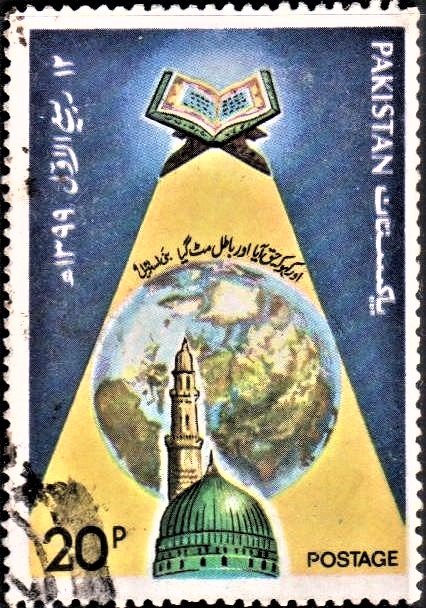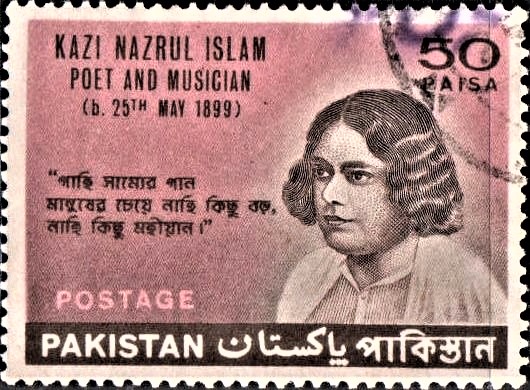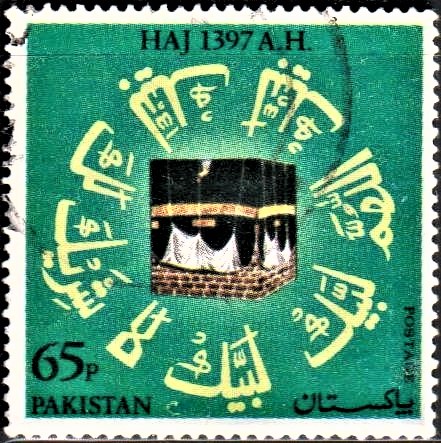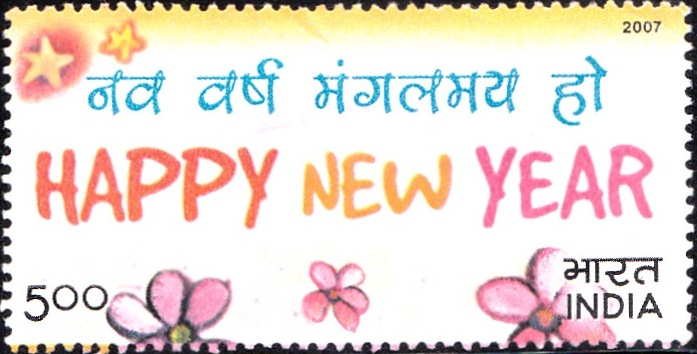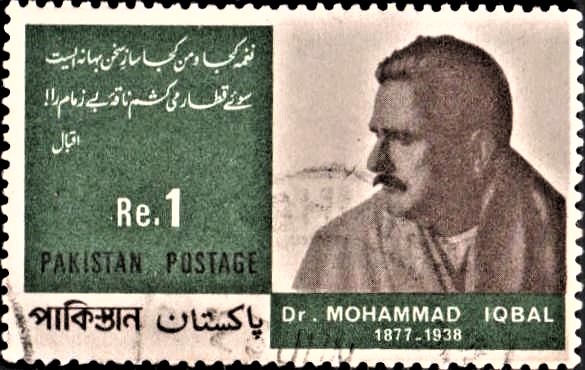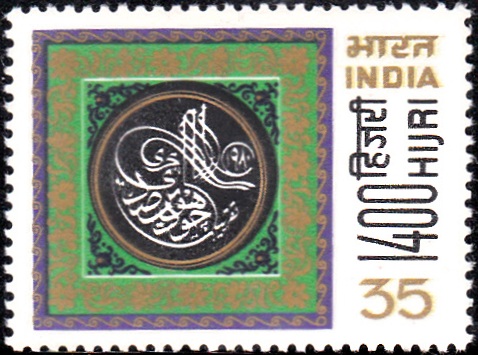
India on Hijri Calendar
A commemorative postage stamp on the Islamic Hijri Year, a lunar calendar consisting of 12 lunar months in a year of 354 or 355 days : 1400 A.H. :
Issued on Nov 3, 1980
Issued for : Indian Posts and Telegraphs Department is happy to issue a special postage stamp to commemorative the commencement of the 15th Century Hijri.
Description of Design : The stamp design incorporates the legend “TAQREEBAT CHAUDHWIN SADI HIJRI – 1980” (Celebrations of the 14th Century of Hijri – 1980) in Arabic calligraphy. The first day cover shows a part of Jama Masjid, Delhi in silhouette.
Designed by : Badar Makhmoor
Calligraphy by : Mohammad Khaliq Tonkvi
Type : Stamp, Mint Condition
Colour : Multicolour
Denomination : 35 Paise
Overall size : 3.91 x 2.90 cms.
Printing size : 3.55 x 2.54 cms.
Perforation : 13 x 13
Watermark : Printed on unwatermarked adhesive stamp paper
Number printed : 30,00,000
Number per issue sheet : 35
Printing process : Photogravure
Printed at : India Security Press
About :
- In common with all the other religions, Islam has accepted the advantages of a natural division of time and thus a calendar. It lays stress on the strict observance of time and its deliberate violation is considered a minor sin.
- The beginning of a calendar generally synchronises with some important and unforgettable event. In Islam also, there are historical reasons for adopting 622 A.D. as the commencement of the Hijri calendar. The Holy Prophet of Islam, Hazrat Muhammad, was born in Mecca around 570 A.D. In 610 A.D., he received the first Divine Message which he continued to receive from time to time. They now form the Holy Book of the Muslims. He transmitted the Divine Message first in Mecca for 12 years. But the Meccans were not responsive and were weak. Thereafter under Divine Inspiration, he migrated to Medina in 622 A.D., where his prophetical mission had immediate acceptance. The migration of the Holy Prophet from Mecca to Medina is a significant event in the spread of Islam. The Hijri Calendar commences from the date of his migration. In Arabic, Hijra means “Migration”.
- Before the advent of Islam, both solar and lunar calendars were in vogue among the Arabs. However, they were not arranged properly and were cumbersome. There was need for a simple calendar and this was met by introduction of the Hijri Calendar. This calendar, based on twelve lunar months, is both simple and natural. It can be chronologically arranged by an ordinary person by seeing the new moon with the naked eye without the help of any instrument or mathematical calculations. The 14th Century of the Hijri era ends this year and the 15th Century commences. It brings new hope of Peace and Fraternity with others, which is the meaning and keynote of Islam.
- (The above text is based on material published elsewhere and/or supplied by the sponsors).



